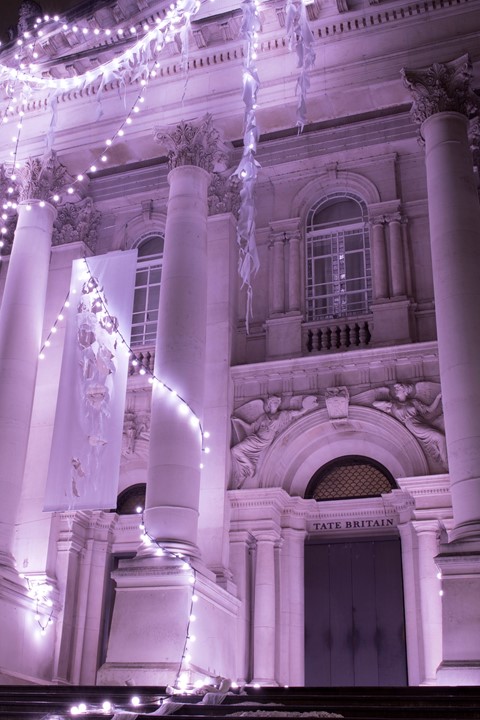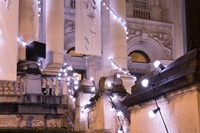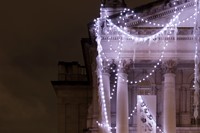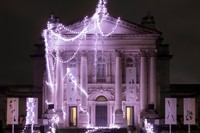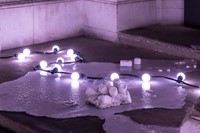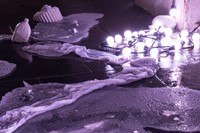As Anne Hardy’s transformation of Tate Britain’s façade is unveiled, the artist reveals how she created the installation for the storied institution
Anne Hardy made her name by erecting complex installations that resembled the aftermath of strange parties or rituals. Originally the RCA graduate would create these meticulous installations, photograph them and then destroy them, so that the image was the only thing that survived and could be seen. In the past five years, Hardy has shifted and let the viewer inside her strange worlds. As she puts it: “In a sense they are images that you enter into, that you are contained within.”
This week the artist has been given carte blanche to transform the façade of the Tate Britain into an installation for Christmas that feels decidedly pagan. Her aim was to draw the building beyond its human limits into the cycles of nature including the moon and tides, fluctuation of the climate and light. The result is a project incorporating light, sound and objects. This is the third time the building has been reworked for the winter and Hardy is in good company, following on from installations by Monster Chetwynd and Alan Kane. Her environments are like emotional envelopes, asking to be ripped open, touched and explored.
“I spend a lot of time gathering before I begin to make anything: atmospheres, physical materials, audio samples, test programming, reading. The different strands of the work develop alongside one another, always with the sense that eventually they will knit together into a whole system or reality. I wanted to work with the Tate façade but change its mood. To treat is as a found object and to think about how it might be if it wasn’t the Tate, or had been overcome by natural events.
“The title of the work, The Depth of Darkness, The Return of the Light is a description of the winter solstice (which occurs halfway through the commission) that I found in a guide about how to celebrate pagan festivals. I have a four-channel surround audio composition coming from speakers we strapped to the building. The advertising banners that are usually there, have been replaced by tattered white ones. I wanted them to suggest ripped sails on a ship – and festoon lights programmed to fluctuate in relation to the audio hang loosely from Britannia’s neck and one side of the façade, as if they have begun to fall off or were never quite put up properly in the first place. On the steps there’s a set of sculptural objects that suggest washed up materials, future fossils and pools of ice and water.
“It’s a site responsive work, more than any other work I’ve made because the site has so much personality history and content attached to it. It’s interesting to think about the Thames constantly flowing, through time, through climate fluctuations, through different geological, human and non-human ages, about the waters receiving ritual objects and moving in phase with the moon cycles. Bones of jungle cats, lions, mammoths and elephants have been dug up alongside the A13 to the east of the city and the site the Tate stands on was a swampy marshland not that long ago.
“There is an urgent need for you to experience an ephemeral work directly, with your own body and senses. It’s is about the complexity of the relationship you have with something as a person, as a physical entity, as a sensation. And that is a powerful tool for activation, empowerment and sensuality.”

The Depth of Darkness, The Return of the Light by Anne Hardy is at Tate Britain from November 30, 2019 – January 26, 2020.
